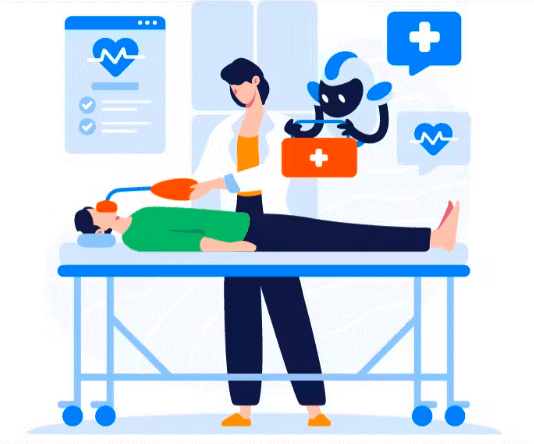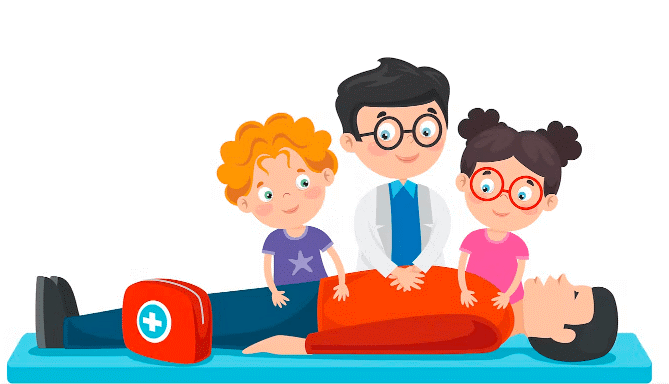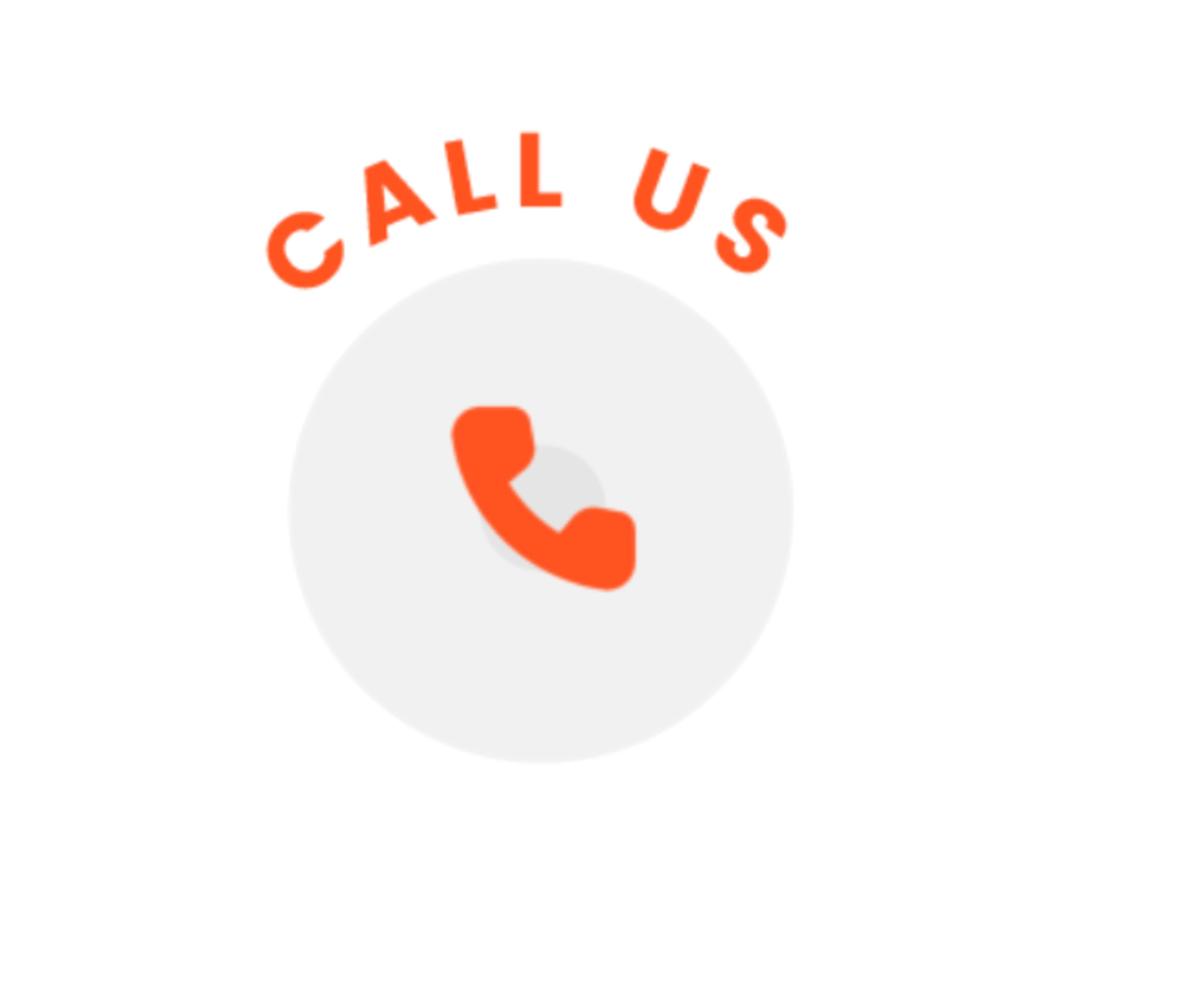Accidents and illnesses can happen to people while they are working. It makes no difference if the damage or the illness was brought on by the Work that they undertake. Patients must receive urgent medical assistance, and in more extreme cases, a call should be placed for an ambulance. First aid at Work (FAW) refers to the preparations that employers must make to guarantee that first aid is provided when needed. It has the potential to save lives and stop less serious injuries from developing into more serious ones.
The Health and Safety (First-Aid) Regulations of 1981 compel employers to offer sufficient and appropriate facilities, people and equipment to enable workers to receive first aid kit at work if they suffer an injury or fall ill while at work. The elements that should be regarded as suitable and acceptable will depend on the particulars of a given workplace.
HSE first aid kit requirements for 2023
The Health and Safety Executive is responsible for ensuring that all organisations and businesses in the United Kingdom to comply with and adhere to safety standards in the workplace. In a business or commercial setting, you must apply to guarantee that you comply with HSE first aid kit that applies to your organization. If a business does not comply with HSE first aid kit for workplace requirements, they may face:
- Warnings
- Fines or penalties
- Losing a license
- Prosecution
Therefore, every organisation must include the provision of first aid for office as a high priority and requirement in their health and safety policies. Working in an office setting, exposes one to risks like tripping, falling, burning, self-inflicted injuries, electrocution, and inhaling poisonous compounds that could harm one’s health. It is ultimately the responsibility of the business owner to ensure that their employees are not placed in any risky situations by keeping office first aid kit. And even though the Health and Safety Executive is in charge of ensuring that first-aid kits, the business owners must have them accessible at their premises.
What is a First aid kit?
If a person sustains an injury, a first aid kit is a collection of medical materials and equipment that is intended to offer fundamental medical care. It is made to be quickly accessible and is equipped with several things needed for providing first aid right away. Gloves, scissors, tweezers, sticky bandages, sterile dressings, antiseptic treatments, and CPR masks are common inclusions in first aid kits.
Depending on the intended usage and legal constraints, the precise contents may change. First aid kits are crucial for personal use at home, outdoor activities and as well as in professional environments like first aid kit for office. Simply put, they are a crucial resource for treating wounds or medical emergencies before the arrival of professional medical assistance.
First Aid Box Checklist
There is no formal regulation that specifies what should be in first aid kit, although the Health and Safety Executive (HSE) and the National Health Service (NHS) both recommend including the following things in your pack:
First aid checklist template for each organisation is different and varies accordingly; however general first aid box checklist for work includes the following:
- Adhesive bandages
- Adhesive tape
- Antibiotics and antiseptics
- Breathing barriers
- Gel-soaked burn dressings and treatments
- Cold packs
- Eye coverings
- Eye and skin wash
- Hand sanitiser and/or skin wash
- Exam gloves
- Roller bandages in two and four-inch sizes
- Scissors
- Splints
- Sterile pads
- Tourniquets
- Trauma pads
- Triangular bandages
This is not an entire list, and the complete contents of a first aid kit should always be dependent upon your First Aid Needs Assessment. This assessment may lead you to include more equipment for injuries that are common in your workplace or keep different quantities of certain equipment.
One should have easy access to a first aid kit that is kept nearby. Find a suitable replacement that you can use right away, and make it a habit to check the expiration dates on your prescriptions regularly to determine whether or not you need to obtain a new one.
Different Types of First Aid Kits
First Aid Burn Relief Kits
Burn treatment kits are equipped with everything required to treat burn injuries instantly. When used correctly, burn supplies can help patients experience less pain and have less permanent scarring. The majority of burn kits include ointment to sanitise the wounded area and reduce pain, burn dressings and gauze to cover burns, and burn gel to cool the burned area, speed healing, and boost the body’s natural ability to heal itself.
First Aid Emergency Kits
Emergency kits include the basic first aid materials to treat the majority of common first aid injuries and illnesses. These are beneficial in survival situations, search and rescue operations, or in the event of a natural catastrophe.
These kits may contain rescue items along with medical supplies. Some examples of these supplies are whistles, flashlights, emergency blankets, and ration packs with food and water.
Furthermore, emergency kits are typically packed in large containers resembling duffel bags; they include carrying straps, buckles for secure closure, and reflective symbols for increased visibility.
First Aid Vehicle Kits
Designed to treat injuries that may occur anyplace where automobiles are included. In addition to standard first-aid supplies, vehicle first-aid kits typically contain specialised roadside equipment, such as a high visibility vest and an emergency triangle, designed specifically for use in the event of road accidents. Kits created primarily vehicles transportable yet rugged enough to withstand the rigours of travel in automobiles, trucks, and other types of vehicles.
First Aid Travel Kits
First aid travel kits’ cases are quite compact, making them ideal for storage in luggage or automobiles because their primary function is to fulfil the role of a small first aid kit that is utilised for the treatment of minor injuries or illnesses. Therefore, these kits contain a lower quantity of first aid materials than other types of first aid kits.
How to Become a first aider

Becoming a first aider involves the following steps:
- Research: Start by looking up reputable organisations or schools that offer first-aid training in your area. Look for reliable sources like regional or global-wide accredited training facilities.
- Enrol in a Course: Pick a first aid course that meets your requirements and fits your schedule. Different levels of courses are available, from fundamental first aid to sophisticated programmes with CPR and AED instruction.
- Attend Training: Participate fully in the training sessions which usually combine classroom or online instruction with hands-on training. Study how to recognise and treat various medical situations and wounds.
- Complete Course Requirements: Complete the course requirements, which may include written exams, practical evaluations, and skill demonstrations. Concentrate on comprehending the course material, and ask questions if anything is unclear.
- Obtain Certification: You will be awarded a certification or first aid certificate once you have completed the first aid training course. This certificate attests to your successful completion of the programme and demonstrates your first-aid proficiency.
- Stay Updated: Attending refresher courses or additional training sessions can help you stay up to date regarding changes to first aid procedures. It’s crucial to stay up to date because methods and recommendations could change.
- Practice Regularly: Maintain your first aid knowledge by often practising procedures, even in role-playing or simulation scenarios. This helps to solidify your understanding and guarantees that you are equipped to react appropriately in actual circumstances.
Different levels of First aid training

The Level 3 Award in First Aid at Work (RQF) provided by BSHC aims to equip workers with the information and abilities required to render care that might, in the case of a medical emergency, save lives. By the time they have finished this course, learners should be able to prove their knowledge and gain certification in the following areas:
- First aid safety and health standards
- Evaluation of a casualty and any subsequent measures or treatments
- Treatment of unconsciousness, fractures, bleeding, shock and burns
- Ways to handle heart attacks, eye injuries, and other common ailments
- Understanding of basic life support
- How to administer CPR
- Keeping records and identifying injuries
- Examination of a casualty
FAQs
The validity of an occupational first aid certification is two years, after which recertification training is necessary.
Giving tablets or medication is not addressed in first aid at work training, except utilising aspirin to treat a casualty with a suspected heart attack, which is covered in our one-day first aid at work course.
First aid is the treatment provided to an ill or injured person before trained medical assistance is available.
An emergency can be saved by qualified first aiders, who are not only required by law in the workplace. Additionally, it demonstrates that a business owner must be concerned about the company’s and its workers’ security.
All of these topics are covered in one of our Level 3 Award in Paediatric First Aid and Level 3 Award in Emergency Paediatric First Aid courses.


